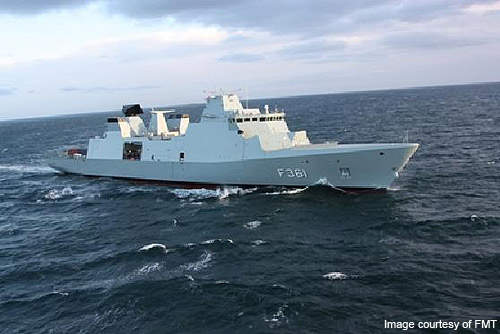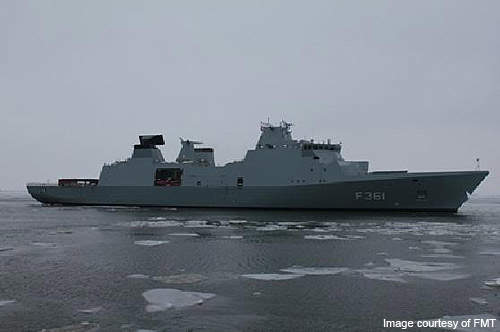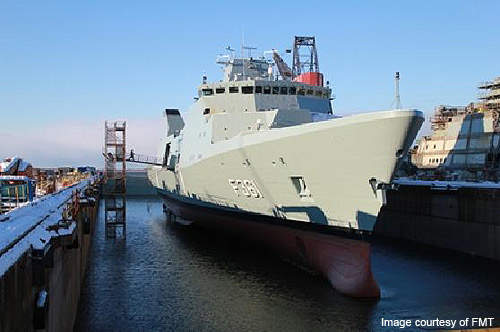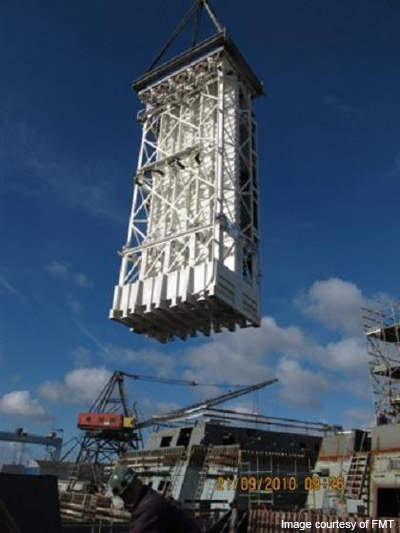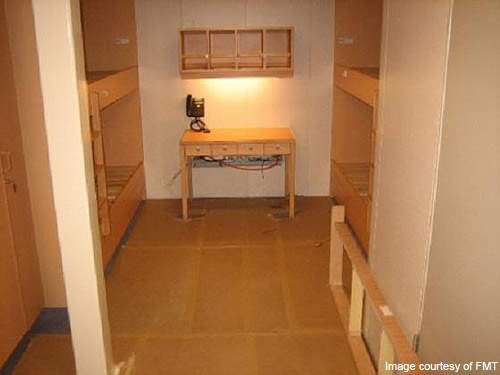The Ivar Huitfeldt Class frigates were built by Odense Steel Shipyard for the Royal Danish Navy. Three frigates entered into service between 2012 and 2013. The class is preceded by the Niels Juel corvette. It is the navy’s largest acquisition project to date.
The keel for the first ship in the class, Iver Huitfeldt (F 361), was laid in June 2008 and launched in March 2010. The frigate was transferred to the Defence Acquisition and Logistics Organisation (FMT) in January 2011 for testing. The second frigate, Peter Willemoes (F362), was laid in March 2009 and launched in December 2010. The third and final ship, Niels Juel (F363), was laid in December 2009.
Ivar Huitfeldt design
The seven-deck monohull design features 15 watertight sections. It has been designed to reduce radar signature, infrared radiation, underwater noise and magnetic signature to make the ship as invisible as possible to an enemy.
The Iver Huitfeldt Class design is an evolution of the Absalon Class developed by the navy and Odense Steel Shipyard (OSS).
The exterior is easily distinguished from the Absalon Class as the Iver Huitfeldt is one deck lower and lacks an internal multipurpose deck (flex deck). The chimney’s design has been changed to prevent the excessive steam impact of SMART-L radar.
The design protects the crew from contamination. The frigate is divided into six hazard zones. All the zones are equipped with separate filters to protect the crew against chemical, radioactive or biological weapon attacks and airlocks are provided between them.
Frigate construction
The frigates were constructed simultaneously in the same dock in a phased manner. The first phase included assembly of all welded steel blocks into a ship platform, while civil equipment was installed by the shipyard and its subcontractors in the second phase.
Following delivery from the shipyard, the frigates sailed to Naval Station Korsor where military installation work took place in the final phase.
Command and control
The frigates are equipped with the Terma C-flex command and control system. The C-flex system integrates commercial off-the-shelf (COTS) units, including a server, console computer, interface computer, LAN switch and UPS unit in an environmentally protected 19in rack. It is based on the T-Core open architecture platform.
The C-flex receives information from shipboard sensors and distributes the data to weapon systems after evaluation. The computer creates an electronic image of the real-time situation around the frigate.
The frigate can exchange information with other units based at sea, air or land. The communications are conveyed through data links and other computer networks.
Weapon Systems
The frigate is fitted with a Lockheed Martin mk41 multimissile vertical launch system (VLS) for the evolved Sea Sparrow missile (ESSM) and SM-2 IIIA missile.
The mk41 system can fire anti-air, anti-submarine and anti-ship missiles. Ivar Huitfeldt is also armed with the Boeing Harpoon block II anti-ship missile system and the Eurotorp MU90 lightweight torpedo fired from a twin or triple torpedo launcher.
The frigate’s main gun is an Oto Melara 76mm Super Rapid gun. The Oerlikon Millennium 35mm naval gun system on board provides close-in air defence. It is based on the new Oerlikon 35mm revolver cannon land-based air defence system. A 12.7mm machine gun is also available on board the ship.
Sensors and radars
The sensor suite includes the SMART-L long-range surveillance radar, the APAR multifunction radar, Furuno navigation radar and ATLAS ASO 94 hull-mounted sonar. The SMART-L operating on L band will provide very long-range surveillance.
Other subsystems include ATLAS ASO 94 hull-mounted sonar, FLIR system Seastar Seafire III, Saab CEROS 200 fire control radars, and EDO 3701 electronic warning and assessment system.
Aircraft
The Iver Huitfeldt frigate features a helicopter deck and hangar to support the operations of medium-sized helicopters, such as the AW101. The deck can also handle larger and heavier helicopters of up to 20t.
Countermeasures
The frigate is fitted with 12-barrelled Terma DL-12T 130mm decoy launchers. Terma SKWS (soft kill weapon system) is a modern decoy-launching system that can fire SeaGnat decoys. The Terma launcher provides 360° coverage against incoming anti-ship missiles.
Accommodation
The Ivar Huitfeldt Class has a 101-man crew divided into four divisions:
- Surgical division of 32 (eight officers, three sergeants and 21 privates)
- Weapons division of 17 (two officers, three sergeants and 12 privates)
- Engineering division of 32 (six officers, three sergeants and 23 privates)
- Management division of 20 (two officers, four sergeants and 14 privates)
Each frigate has berths for 165 people, accommodating small staff, helicopter crew, doctors, students and trainees.
Propulsion
The frigate is powered by four main MTU 20V 8000 M70 diesel engines, placed two and two each, in a combined diesel and diesel configuration. The propulsion system provides speeds of more than 28k.
The ship is equipped with two Becker rudders and a bow thruster with an output of 900kW. A set of active stabilisers provides stability to the frigate. Four generating sets comprising two Caterpillar engines and Leroy-Somer generators are provided. Each pair includes a CAT3512 and CAT3508 generating 1,360kW and 920kW, respectively.

